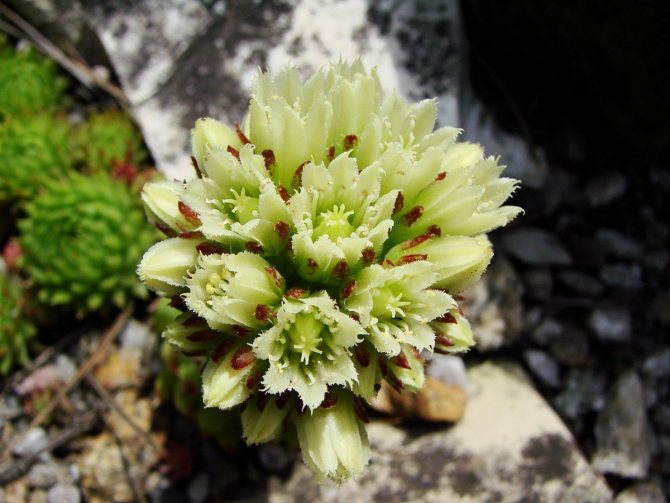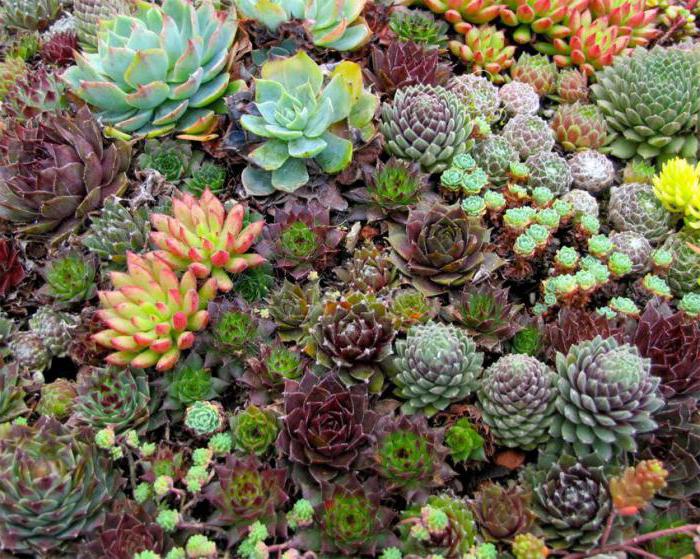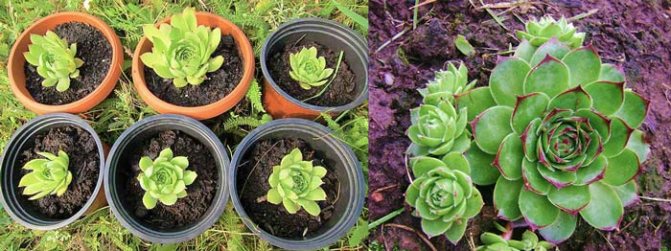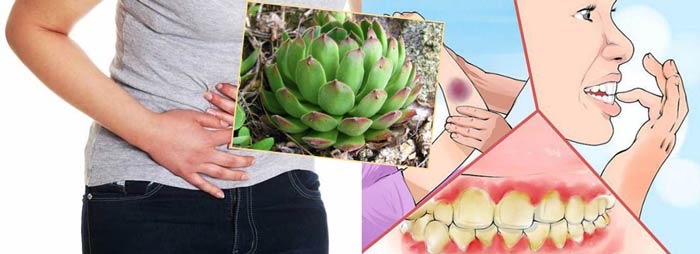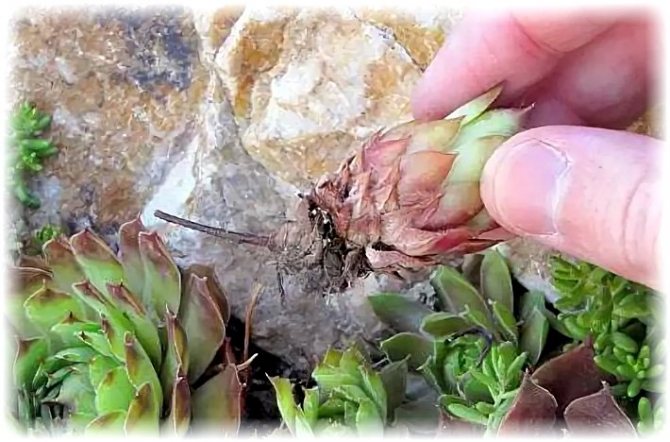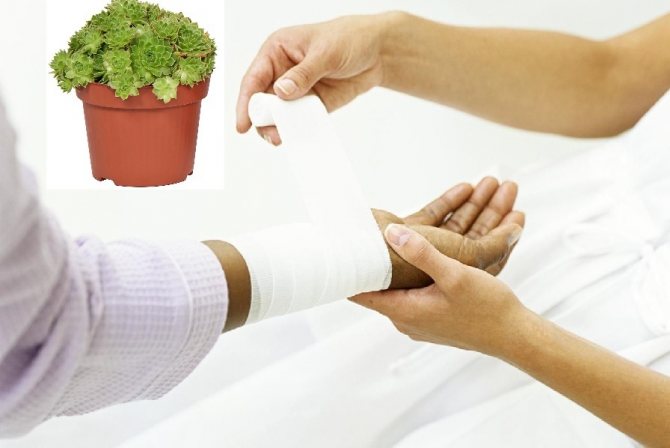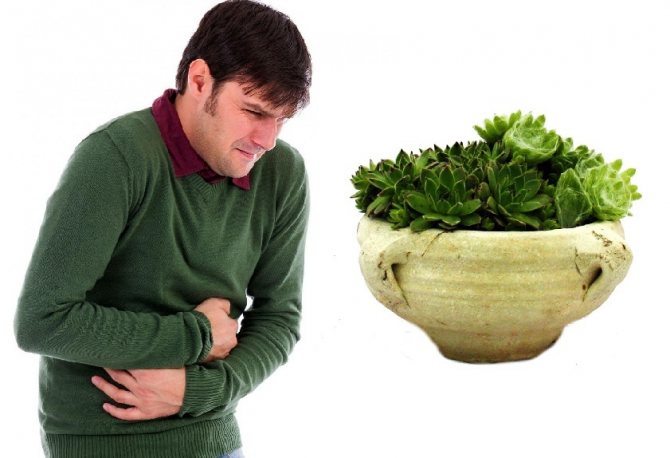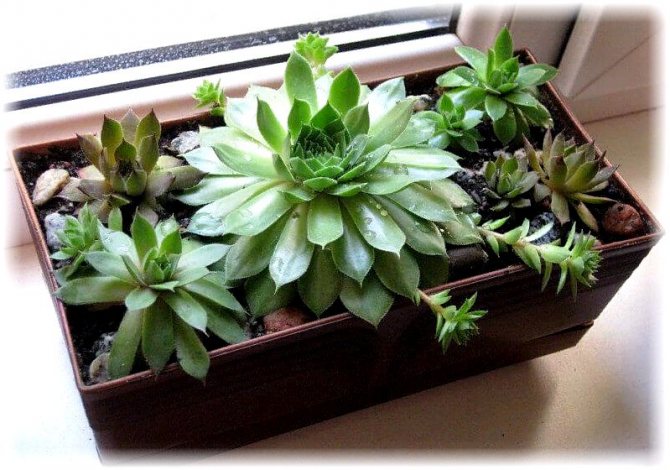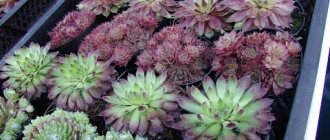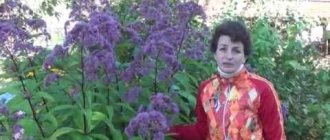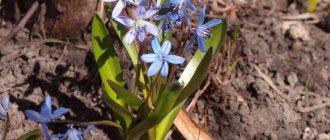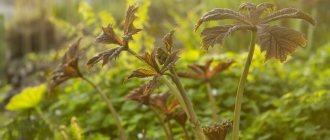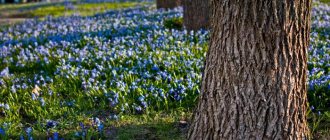Translated from latin rejuvenated means "always alive", and we can say that the name perfectly describes all the features of this plant. It is distinguished by its resilience and the ability to withstand even the most adverse conditions. Due to the fact that it was rejuvenated very resistant to environmental conditions and to any changes, and also due to the fact that the plant has very unusual decorative features and characteristics, it is very popular not only among gardeners and florists, but also among landscape designers who strive for to decorate your site, make it unique and incredibly interesting.
In this article, we will try to get a little closer to this culture, we will tell you about the varieties of this plant. We will also talk about how to care for a plant, how to grow and propagate it. Initially, the young belonged to the genus Sedum - these are herbaceous perennials, which differ in that very thick, dense fleshy shoots are formed on them. Among the people, flower growers gave the young man other names, for example, a stone rose, since many noticed that the young flower has a lot of similarities with the mistress of gardens and flower beds, but the main difference lies in the fact that the buds are not formed due to the petals, but due to the leaves. The leaves have a rather dense skin and are arranged in the form of rosettes. The diameter of the rosettes directly depends on the variety and variety of juveniles, it can vary from one centimeter right up to fifteen.
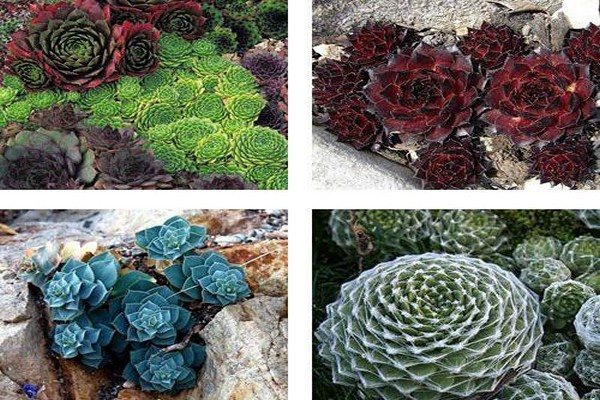
Types and varieties of plants, appearance
Rejuvenated or, as it is also called, "stone rose" is a perennial plant of the Tolstyanka family. In Latin, the name of this plant sounds like Sempervívum, which means "always alive", because it can maintain its viability even in very critical conditions.
This flower has rather wide and succulent leaves, collected in small rosettes, vaguely resembling rose petals (only they are green and pointed). The stems are young, unbranched and erect, are flowering. The flowers are pink, white, yellow, purple, etc., and they are usually corymbose inflorescences on long shoots. However, the short-term bloom of a stone rose seems quite subtle in comparison with the beauty of its green leafy rosettes.
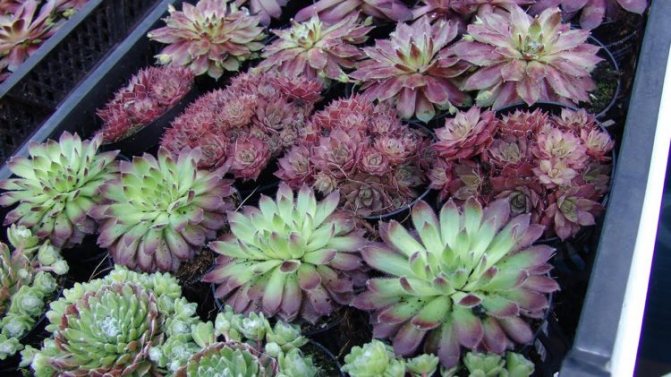

This plant has a fairly large number of different varieties, which, as a rule, differ in color and shape of the leaves. There are about fifty of them, but we will consider only the most common hybrids of the young (varieties and species, photo with the name under each of them):
- The roofing was rejuvenated. This plant variety has wide open rosettes (slightly flattened or spherical), up to about 20 cm in diameter and up to 8-10 cm in height.It blooms (flowers are dark or light purple in color, small in size - up to 2.5 cm in diameter) about 45 days (mid-July to late August). It has green pointed leaves with a reddening tip.
- Wolphen was rejuvenated. Its rosettes grow no more than 5 cm in diameter. The leaves are of a rich green hue, smooth, with cilia along the edge (there are leaves with a red base). It blooms with bright yellow flowers.
- The mountain was rejuvenated. It has numerous small rosettes (up to 2 cm in diameter). Its leaves are dark green, sharp, with long hairs along the edges. It blooms in large flowers of a beautiful purple color.
- Caucasian rejuvenated. Just like its previous "brothers", it grows in small rosettes up to 5 cm in diameter. Leaves are oblong, fluffy along the edge. Flowers with a diameter of about 10 - 15 cm (purple or purple).
- Dwarf (undersized) rejuvenated. The largest rosettes of this type of juveniles reach no more than 2 cm in diameter. Leaves are deep green, oblong, pointed. It blooms with small lilac-purple inflorescences.
- The marble was rejuvenated. This is a very beautiful rejuvenated species. It has flat rosettes of about 5-10 cm in diameter. The leaves are red with green tops and edges. The flowers are lush, about 2.5 cm in diameter, with red petals with white edges.
Thor flower
In Scandinavian mythology there is a formidable god Thor - the lord of thunder and storm. He protected people from evil, which in mythology is represented by giants. Thor was invulnerable, in this he was helped by his strength and dexterity, as well as equipment - Thor's hammer, Thor's belt and a bronze chariot. God Thor is one of the greatest heroes of the Scandinavian epic, people still preserve his memory in works of art, films, decor items. And also a very interesting plant is dedicated to the Torah in Scandinavia - a stone rose (or rejuvenated). Photos of flowers demonstrate their unusualness.
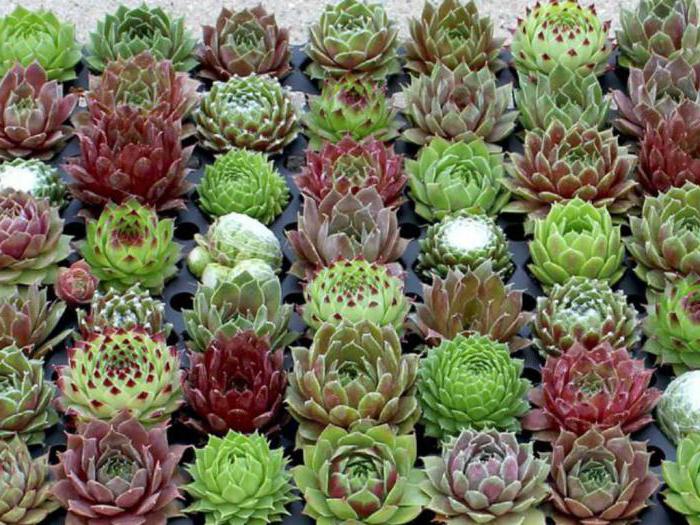

Where and how it grows
The plant we are considering is well adapted to an unstable climate: both damp, and hot, and cold. All species and varieties of Sempervivum are sufficiently drought-resistant, and at the same time, do not require other measures against excess moisture, except for drainage. Youngsters do not like shading, in which they lose their shape and their characteristic color.
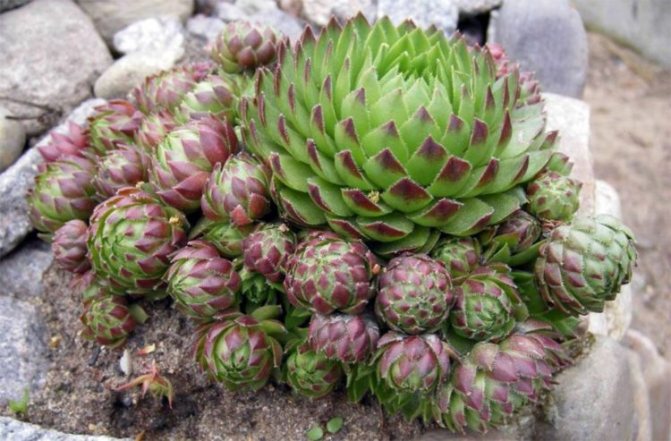

These flowers "feel" well on any cultivated soils, except for excessively damp ones (preferably dry or sandy soils). They are more suitable for slightly alkaline or neutral soil, since if it contains too many nutrients, then the color of the plants will be paler than usual, and in general they will be less resistant to overwintering. Coarse sand, granite screenings, expanded clay are used to loosen the soil.
COAT WITH CHICKEN
Rejuvenated refers to monocarpic plants, that is, those that bear fruit once in a lifetime. In the first year of life, the rosette begins to propagate vegetatively: stems grow from the axils of the lower leaves, new plants appear from the buds at their ends, which develop at the expense of the mother plant. It is this peculiarity of the young that explains its popular name in England - "hen with chickens." Over time, new outlets will grow roots and start feeding on their own.


The modest flowers look very graceful on closer inspection.
Interestingly, the aerial roots of small new rosettes, before reaching the ground, successfully assimilate water from fog or simply in high humidity. In the third year of life, the rosette reaches the final stage of its development. The stem is stretched out and covered with small leaves with dense pubescence and turns into a peduncle, on which an inflorescence is formed.
Benefits and Applications
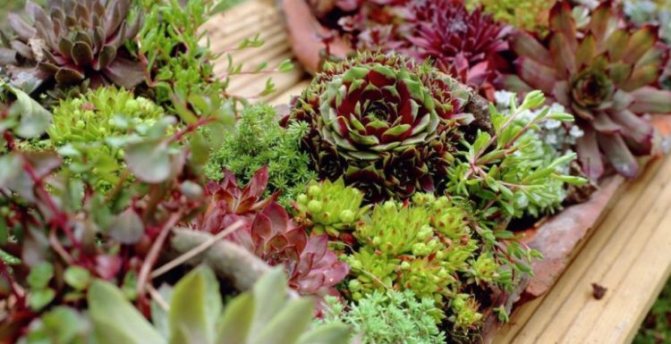

Despite the fact that rejuvenation is most often used for decorative purposes, it has a sufficient number of useful properties:
- In ancient Greece, people considered Sempervivum to be the best antidote in existence, and therefore drank its extract with wine.
- Rejuvenated has an anti-inflammatory effect, and therefore can be used as an anesthetic.
- It has a high-quality disinfectant effect, and therefore is used for wound healing.
- Rejuvenated also has an antiscorbutic effect and is actively used in the presence of ulcers, diarrhea, fevers, stomatitis.
- A decoction made from rejuvenated helps in the presence of thrush.
- Tincture from this plant can help in the treatment of diseases affecting the respiratory tract.
- With the help of this plant, worms can be removed from the human body.
It is also important to know that for the preparation of various medicinal decoctions, infusions, ointments, etc., only the leaves of the plant are used, since they contain a large amount of various microelements.
Healing properties
The medicinal properties of this plant have been known since ancient times. Leaves that are harvested during flowering have healing properties. First of all, traditional medicine uses rejuvenated roofing. It is believed that it can alleviate conditions in case of poisoning, has wound healing, disinfectant, sedative and antiscorbutic properties.
Official medicine does not confirm this information, but does not deny it either - there are no data on the study of medicinal properties that have made official medicine younger today.
Harm and contraindications
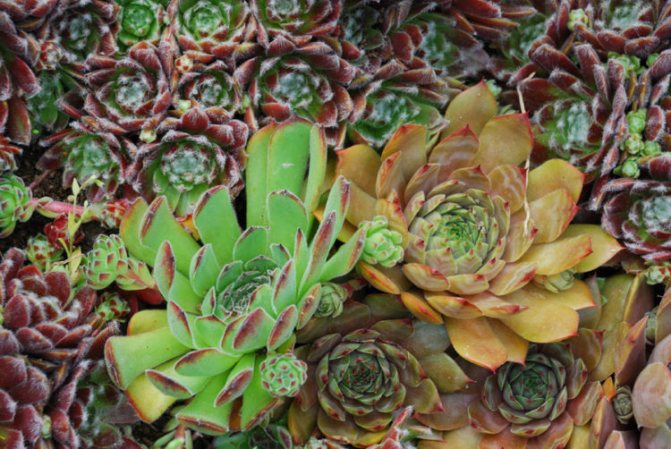

Since the benefits of using rejuvenated for medicinal purposes have not been 100% proven, you need to be more careful with it, because it is possible that:
- allergic reactions;
- poisoning;
- feeling unwell, etc.
It is also important to remember that the stems, seeds, cuttings or flowers of the plant are not used for the preparation of medicines and for internal use.
At home
One of the interesting indoor plants was rejuvenating. The stone flower will be a suitable green pet for those who love and know how to care for plants, and for those who often forget to water them, not to mention careful care. On the windowsill in one container, you can grow whole groups of such green pets, combining them with other succulents. They are undemanding to care for, to sunlight or humidity, and therefore they will decorate any corner of the house.
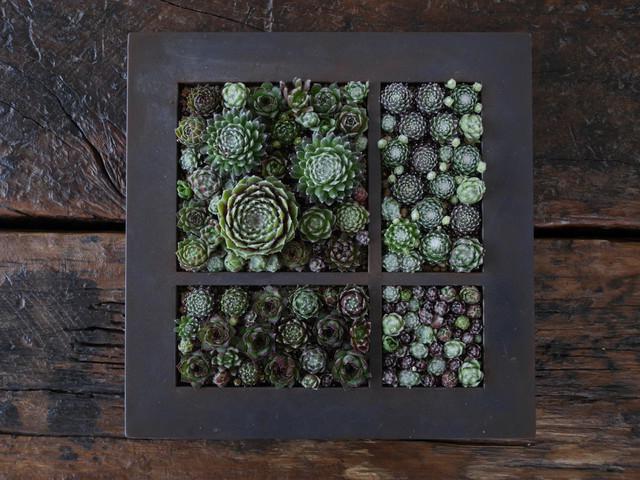

How to grow, care and pests and diseases
In this section, we will consider how the "engraftment" of the young, planting and care in the open field of a given plant occurs.
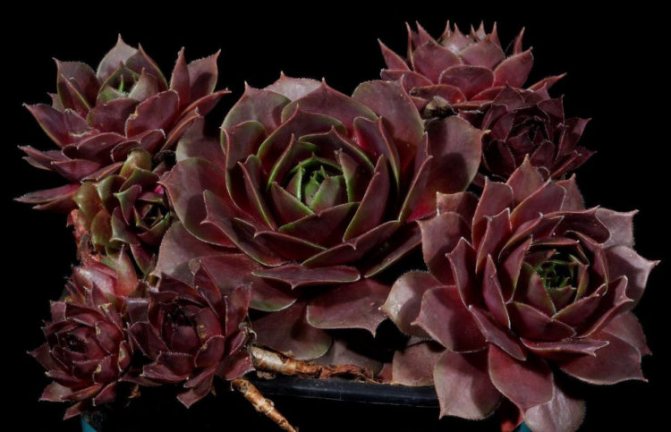

All types of plants we are considering are quite unpretentious (it is not for nothing that the people call it "tenacious"). When planting rejuvenated, as a rule, they choose open and sunny places (as already mentioned, the youth does not like the shadow, although it is not destructive for him). So, the root system of these plants is weak and superficial, swampy and water-filled soils are unsuitable for it. You can transplant the young at any time of the growing season.
When rearing young, rosettes are planted with roots and without roots (roots are formed very quickly). For root formation, moderate watering is required for a week after planting. The recommended distance between plants is about 10 cm.
Caring for a flower consists only in the timely removal of weeds (neither loosening nor feeding is necessary for it). It should also be taken into account that the old outlet can cause rotting of healthy leaves of the daughter outlet for the next year.
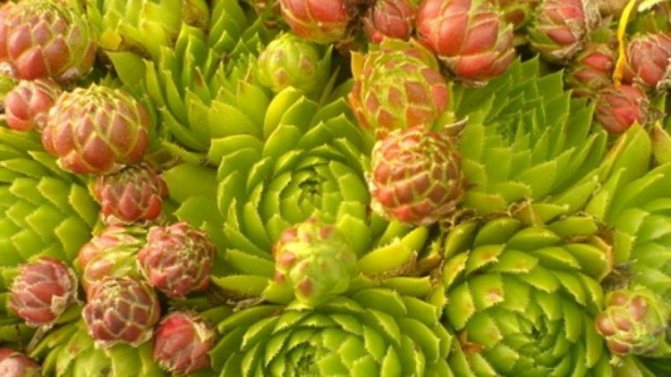

Consider also home breeding rejuvenated, planting and caring for at home is as simple as in the open field. In flower shops, this plant is often sold under the name "Sempervivum Mix", any consultant will describe in detail the care at home: this flower tolerates the dry air of apartments well, takes root in flower pots and requires rare watering.
The main enemy of the young are birds (magpies, jackdaws, jays and crows). May beetle larvae also damage this plant: they gnaw the roots and base of the stem. Of the diseases, the rot of an undetected nature often causes trouble for the stone rose. In rainy, cold weather, individual outlets can also rot. But, fortunately, this process does not “spread” to neighboring sockets.Diseased sockets just need to be removed.
In the natural environment
A flower called rejuvenated is common on scanty stony soils practically throughout Europe, Asia, and in the East. It easily tolerates a lack of moisture, excess or lack of sunlight, frost even down to -30. It is thanks to its vitality that the plant has received a characteristic name - "eternally living", which in Latin will be Sempervivum.
The plant was revered by many nationalities as a symbol of stamina and longevity. Also, its correct, geometrically aligned shape of the sockets looks unusual. Thanks to her, the flower was named "stone rose". By the way, the structure of the rosette is young absolutely exactly corresponds to the rule of the golden section, and it can be presented in mathematics lessons as a classic example of natural geometry.
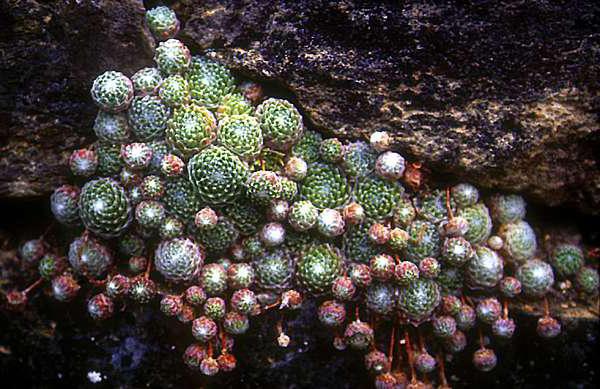

Reproduction rejuvenated
It usually reproduces vegetatively, seed reproduction is impractical, since most species form a large number of small daughter rosettes. Their separation and planting are usually carried out in the spring, sometimes in the summer. Very small sockets are grown on the ridges, large ones are immediately planted in a permanent place, keeping a distance of 10 cm.
Seeds are sown in February-March to a depth of no more than 1 mm. Germinated at a temperature of 20 ° C. Seedlings appear in 3-5 days. Seedlings are kept in the light, protecting them from the hot sun. They are planted in a permanent place at the end of June-July.
Decorativeness rejuvenated
Interest in the decorative properties of the young aroused in the 18th century. At the same time, the main methods of planting these plants developed - borders and carpets from rejuvenated trees appeared in French gardens. They were traditionally used as ornamental plants in parterres, making up lines and shapes. Free, asymmetrical landing appeared later, at the end of the 19th century. At the same time, the first European rock gardens arose, and the young took their permanent place there, traditionally adjacent to low ground cover stonecrops and saxifrage.
In the second half of the twentieth century, the younger ones become the object of close attention of flower growers, and their purposeful selection begins. The Dutch and the Americans, the Germans and the British have been ill with this hobby at different times. Breeding advances in recent decades have followed a new fashion for colored forms of plants. Already in Europe there are many spectacular dark-colored cultivars - from dark carmine to almost black, or rather, deep purple, because there are no black plants in nature. But in our country, specimens of deep saturated color are not yet common.
In general, the number of varieties rejuvenated today is quite large. The number of those registered has already exceeded four thousand. This figure is far superior to the original sixty species. So we can assume that man's attempt to correct nature in this case was a success. It remains to be hoped that these hordes of cultivars will gradually become available to Russian amateurs.
Numerous varieties of juveniles represent a wide range of different colors of rosettes. There are green, silvery, yellowish, pink, burgundy, and some varieties change the color of the leaves depending on the season. This allows them to be widely used in the creation of colorful "carpets". Different species, when grown together, can be pollinated, and many hybrids have been obtained in culture. Even from natural habitats, interspecific hybrids have been described.
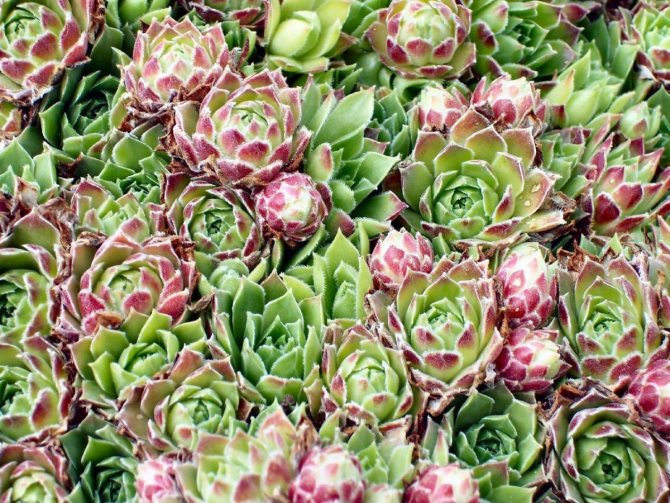

It was rejuvenated.

